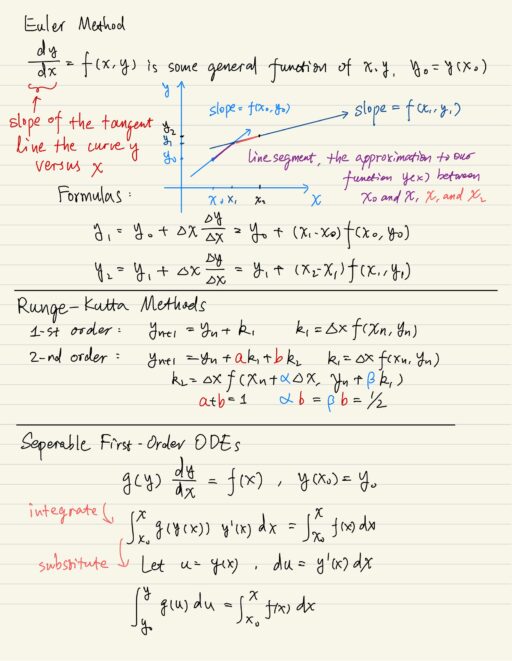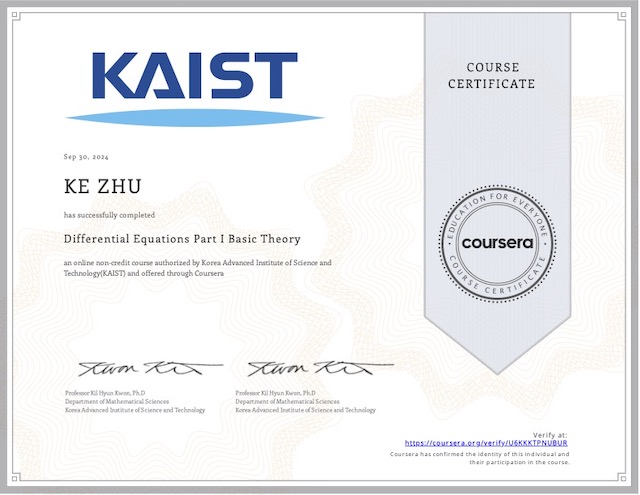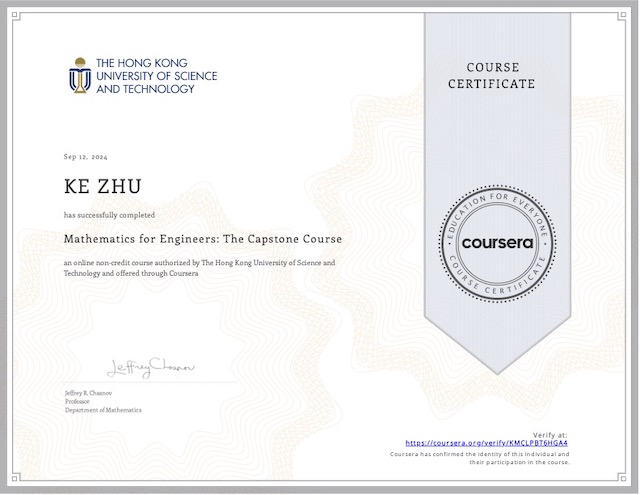Euler Method
Euler method is a very simple numerical method that can be used to solve differential equations. For example dy / dx = f(x, y) , there is usually no such a thing as an analytical solution, so one has to solve numerically with an initial condition y(x0) = y0 . Numerical methods approximate the solution y(x) as a line segment that follows the slope dy / dx , getting new point x1, y1 . Then the new point becomes the initial condition, we repeat the process.
So if the ∆x is small enough, you will have all these lines segments all glued together, it will look like a curve, which is the solution. Occasionally this can go wrong, in case that f(x, y) is not well-behaving function, say infinity, imaginary, etc.
Separable First-Order ODEs
g(y) dy/dx = f(x)If a first-order differential equation dy/dx can be expressed as a function of x multiplied by a function of y, then we say it is separable, where it is possible to find an analytical solution. A separable equation can be integrated, and end up with a solution that you have an integral on the left, and an integral on the right. In many cases you can solve this equation for y as a function of x.
Linear First-Order ODEs
dy/dx + p(x) y = g(x)To solve it, the idea is multiplying it by something called integrating factor, which is going to help us to integrate the differential equation. Applications includes: compound interest, terminal velocity, RC circuit.
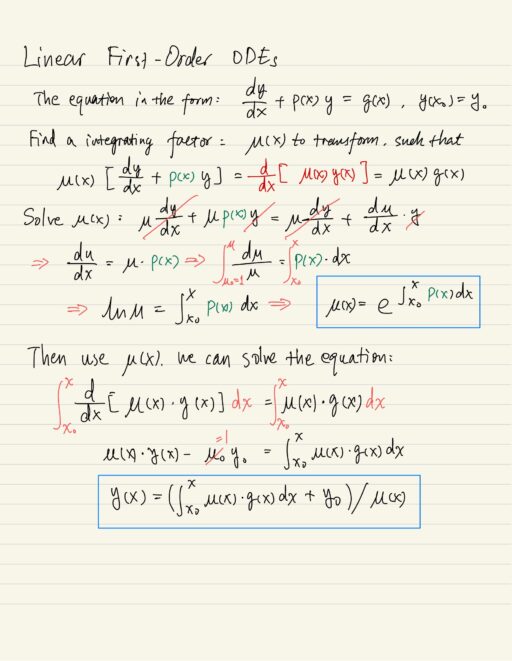
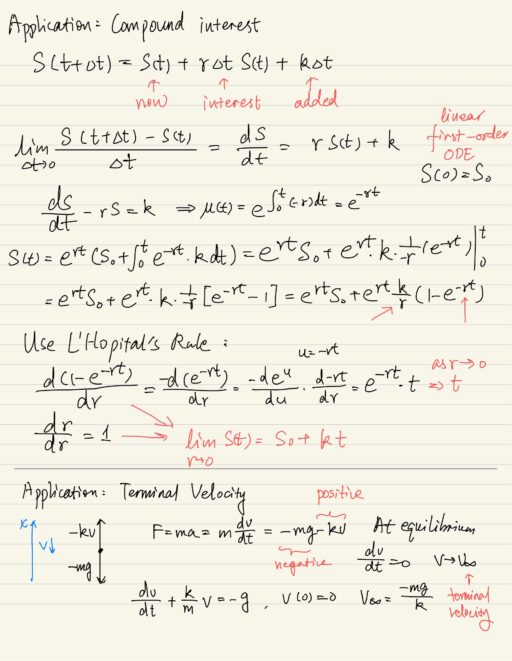
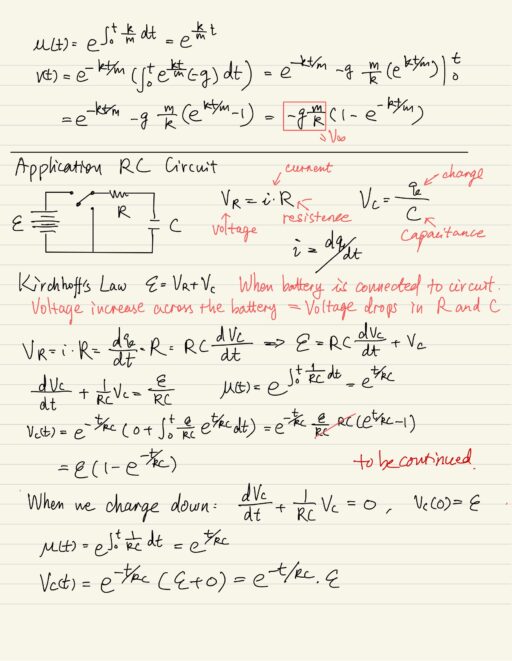
My Certificate
For more on First-Order Differential Equations, please refer to the wonderful course here https://www.coursera.org/learn/differential-equations-engineers
Related Quick Recap
I am Kesler Zhu, thank you for visiting my website. Check out more course reviews at https://KZHU.ai
